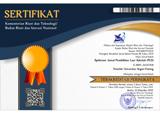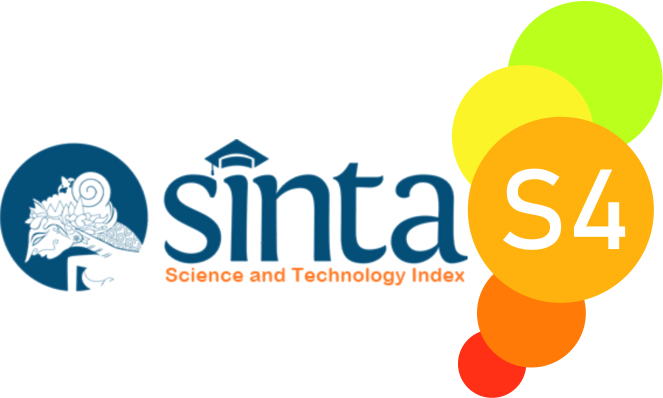Description of the Assistance Function the Keluarga Harapan Program (PKH) at Balai Betung Payakumbuh
 ), Ismaniar Ismaniar(2),
), Ismaniar Ismaniar(2), (1) Universitas Negeri Padang
(2) Universitas Negeri Padang
 Corresponding Author
Corresponding Author
DOI : https://doi.org/10.24036/spektrumpls.v2i3.106243
Full Text:
 Language : en
Language : en
Abstract
This study background is the success of the Program Keluarga Harapan (PKH) at Balai Betung Payakumbuh. This is proved by the decreasing of Drop Out students, the increasing of the toddler nutrition’s quality, and the decreasing of PKH’s member. This study supposes the impact of the Assistance Function in the Program Keluarga Harapan (PKH). This study goal is to observe the description of assistance function in the PKH’s members at Balai Betung Payakumbuh. The type of this study is quantitative descriptive. The population in this study is all of PKH’s members that are 25 persons. The technique sample of this study is cluster random sampling. The sample is 82% of the population is about 20 persons. The data collecting is using a questionnaire. The data collection tool is a list of statements. The data analysis technique is using a percentage formula. The study result shows the Assistance Function based on the PKH’S member's statement are a) problem-solving consultations in PKH’s activities carried out well. b) the Assistance Function as source management during PKH’s activities carried out well. c) the Assistance Function as an educator in the PKH’S activities carried out well. These show by the members of PKH’s answered often. Based on the study the assistance function suggested to be continued ideally and maintain the activities that have done.
Keywords: Function, Assistance, Success, Program
References
Ansori, & Priyono, J. (2018). Analisis Pengaruh Penyerapan Tenaga Kerja dan Upah Minimum Pekerja terhadap Jumlah Kemiskinan di Provinsi Jawa Timur. Jurnal Ekonomi Dan Bisnis, 10(2), 1–15.
Arikunto. (2014). Prosedur Penelitian Suatu Pendekatan Praktik.
Daraba, D. (2015). Faktor-Faktor yang Mempengaruhi Keberhasilan Program Pemberdayaan Masyarakat Miskin di Kecamatan Polongbangkeng Utara Kabupaten Takalar Propinsi Sulawesi Selatan, 17(2), 168–169.
Daswati. (2012). Implementasi peran kepemimpinan dengan gaya kepemimpinan menuju kesuksesan organisasi. Academica Fisip Untad, 04(01), 783–798.
Diayu Intan, & Sari, W. P. (2015). Indikator Keberhasilan Pelaksanaan Program Corporate Social Responsibility, 15.
Kuntoro, S. A. (2006). Pendidikan Nonformal (PNF) bagi Pengembangan Sosial. Jurnal Ilmiah VISI PTK-PNF, 1(20), 14–18.
Mutmainnah, F., & Ismaniar, I. (2018). Hubungan antara Media Pembelajaran Fiqih Menurut Peserta Didik dengan Motivasi Belajarnya di MDA. SPEKTRUM: Jurnal Pendidikan Luar Sekolah (PLS), 1(4), 432. https://doi.org/10.24036/spektrumpls.v1i4.101746
Pahlevi, reza. D. (2016). Manajemen Sarana dan Prasarana untuk Meningkatkan Mutu Penbelajaran. Jurnal Manajemen Pendidikan, 25(1), 88–94.
Rahmawati, E., & Kisworo, B. (2017). Peran Pendamping dalam Pemberdayaan Masyarakat Miskin melalui Program Keluarga Harapan. Journal of Nonformal Education and Community Empowerment, 1(2), 161–169. https://doi.org/10.15294/pls.v1i2.16271
Ramli, M. (2015). Hakikat Pendidikan dan Peserta Didik. Jurnal Tarbiyah Islamiyah, 5(20), 61–85.
Sugianto, I. (2016). Pengaruh Persepsi Masyarakat Terhadap Keberhasilan Program E-Ktp Di Kecamatan Cisayong Kabupaten Tasikmalaya. Jurnal Ekonomi Perdesaan, 1(1), 98–110.
Susantyo, B. (2019). Optimalisasi Peran Dan Fungsi Pendamping Sosial.
 Article Metrics
Article Metrics
 Abstract Views : 240 times
Abstract Views : 240 times
 PDF Downloaded : 68 times
PDF Downloaded : 68 times
Refbacks
- There are currently no refbacks.

This work is licensed under a Creative Commons Attribution-NonCommercial 4.0 International License.



